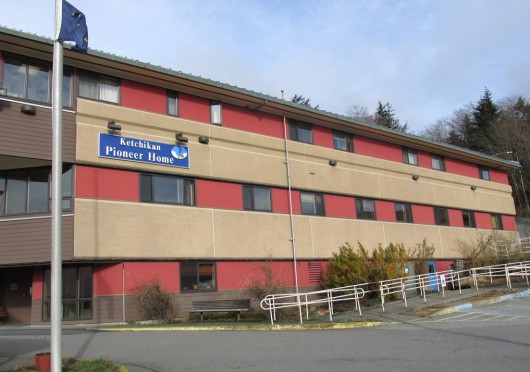
Lawmakers heard testimony from those affected by Pioneer Home rate increases in a Monday hearing. They’re considering a bill that would partially reverse rate increases that went into effect last year.
Last September, residents at the six Pioneer Homes across Alaska saw their rates jump between 40 and 140 percent.
That’s left some seniors in dire financial straits. Juneau resident Brad Rider says his mother’s rate more than doubled.
“Directly after it went into effect, my mother’s rate went from just over $4,000, it went to over $11,000 — almost overnight,” he said Monday.
Rider, his parents and a resident of Ketchikan’s Pioneer Home, Eileen Casey, are plaintiffs in a lawsuit that seeks to reverse the rate increases.
The state has justified the new rates by arguing they are bringing fees in line with the cost of caring for Alaska’s elders.
Pioneer Homes charge residents based on the level of care they need. In September, the lowest-paying residents saw their rates jump by about $1,000. But rates for some residents requiring more intense care jumped by more than $6,000.
Legislators have been weighing in. At a recent Senate hearing, Anchorage Democratic Representative Zack Fields pushed a bill that would dial back the rate increases. He presented the bill to the state Senate Health and Social Services Committee Monday.
“There are 3 goals of House Bill 96,” he said. “Maintain the Pioneer Homes and Alaska’s historic commitment to our elders, provide revenue and financial stability for the homes, and provide some certainty and predictability to both residents and the department about the trajectory of rates in the future.”
Fields acknowledges that rates have to rise to ensure that the Pioneer Home system remains viable. But he proposes tying rates to inflation to ensure that seniors aren’t caught off-guard by dramatic rate hikes.
“The real value of rates had not kept pace with inflation over several years,” he said. “Our bill looks back and says, ‘If we were going to take into account inflation going back to 2004, what would that look like,’ and that establishes a new baseline for rates recognizing that costs do increase over time.”
Rates under Fields’ bill would still be higher than they were before last year’s hike, but the increases would be less dramatic. Residents requiring the most intense care would see increases of less than $2,000. Lower-level residents’ rates would only rise by a little more than $400.
Rider pushed the committee to advance the bill. He asked the legislature to support both the homes and the elders that live there.
“We should be holding it up for the rest of the country to look at,” he said. “Those guys are great. And the people in there are great.”
The bill passed the Alaska House 35-4 during the last legislative session. Senate president Cathy Giessel and Senate minority leader Tom Begich have signed on as sponsors in the Senate. But even if passed by lawmakers, it could face the governor’s veto.
In the meantime, there is financial assistance for those who can’t afford the higher rates. But in many cases, residents are forced to sell most of their properties and belongings. Or even get a divorce to untangle their assets.





